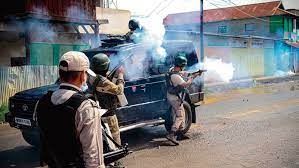SC rejects requests for cross-verification of votes cast using VVPAT and EVMs
The Supreme Court said that “blindly distrusting” any part of the system might lead to unjustified skepticism and dismissed arguments on Friday demanding full cross-verification of votes cast using electronic voting machines with a Voter Verifiable Paper Audit Trail (VVPAT).

In two concurring rulings, a bench of Justices Sanjiv Khanna and Dipankar Datta upheld the notion that “democracy is all about striving to build harmony and trust between all institutions” and rejected all of the requests submitted in the case, including those requesting a return to ballots used in elections.
Two orders were issued by the court. After delivering his decision, Justice Khanna ordered the Election Commission to keep and seal the units used to load symbols for a period of forty-five days after the loading of the symbols into the electronic voting machines located in strong rooms.
On the request of the runners-up and third-place contenders, the Supreme Court also permitted the engineers of the EVM makers to confirm the microcontrollers of the devices after the announcement of the results.
The court said that requests for the microcontroller’s verification may be filed within seven days of the results being announced and costs being paid.
“If EVM is found tampered with during verification, fees paid by the candidates will be refunded,” it said.
The ballot unit, control unit, and VVPAT are the three components that make up an EVM. Microcontrollers with factory-burned memory are incorporated in all three of them.
Currently, at five voting places each assembly seat, the Election Commission matches VVPAT slips with EVMs at random.
“While maintaining a balanced perspective is crucial in evaluating systems or institutions, blindly distrusting any aspect of the system can breed unwarranted scepticism…,” Justice Datta said.
The bench recommended that the poll panel look into whether bar codes and associated symbols may be utilized for parties, as well as if electronic devices can be used to count VVPAT slips.
In addition to requesting a return to the ballot paper method, the bench said that the three petitions before it had asked for 100% of the VVPAT slips to be counted and that the voter should be given the slips to check and place in the ballot box.
Judge Khanna said, “We have turned down every one of them.”
On April 24, the bench heard the case and said that just because there have been questions raised about the effectiveness of EVM, it cannot “control the elections” or provide orders.
According to the petitions, polling equipment may be used to rig the results.
One of the petitioners, the NGO Association for Democratic Reforms, had asked for the poll panel’s 2017 decision to swap out the clear glass on VVPAT machines with an opaque glass that allows voters to see the slip only while the light is on for seven seconds to be overturned.
Additionally, the petitioners have asked the court to order a return to the previous voting paper method.
The seven-phase Lok Sabha elections are scheduled to start on April 19 and end on June 4, when the results will be declared.







